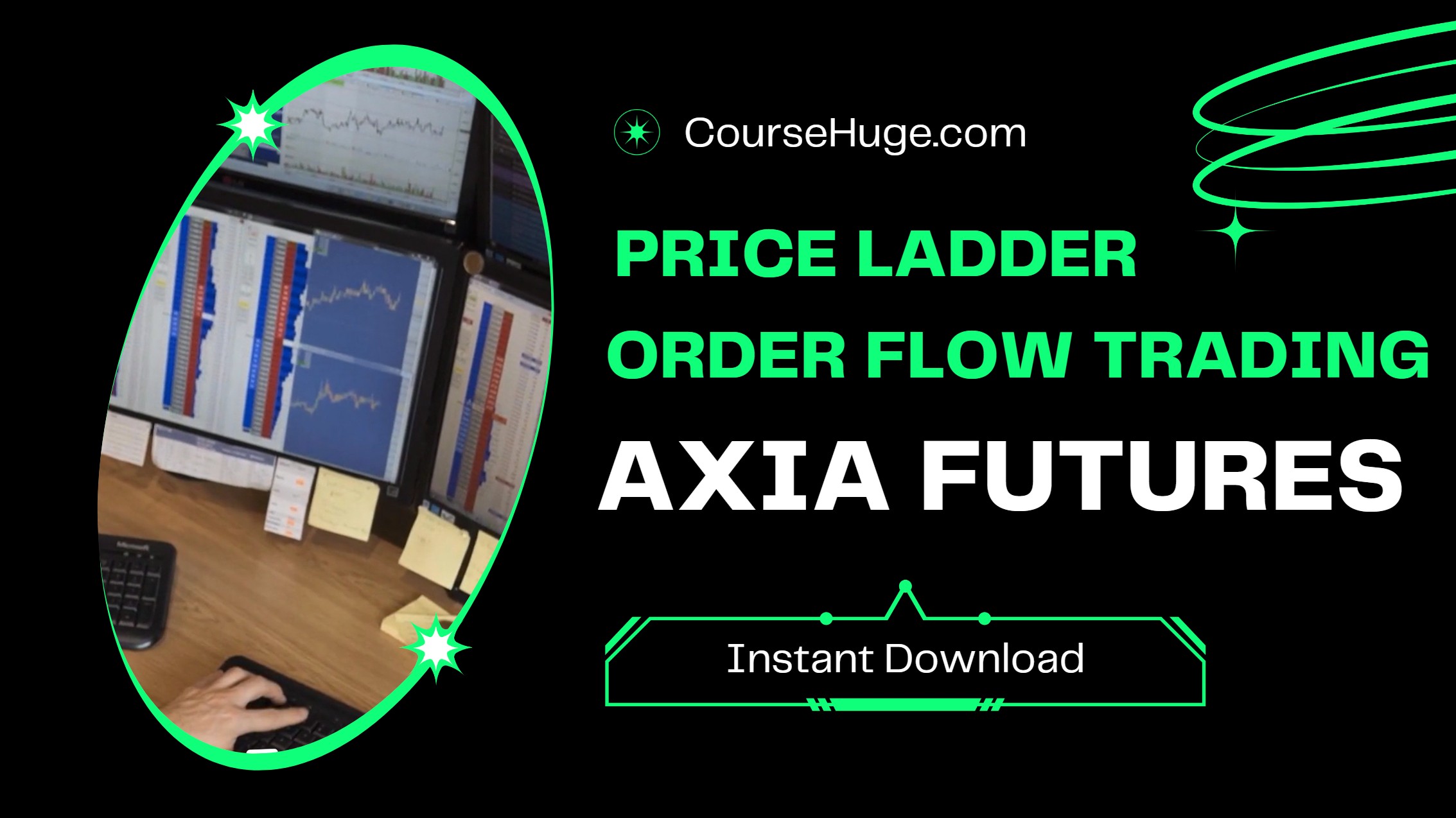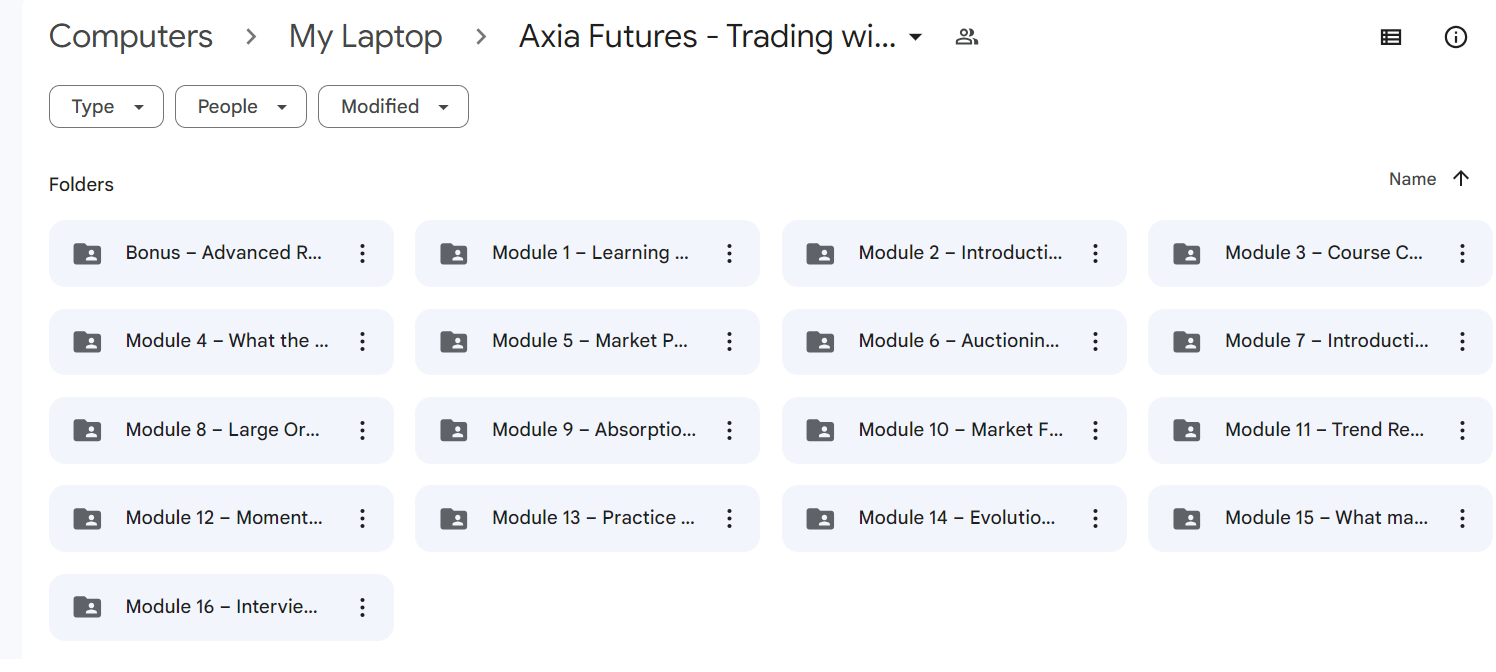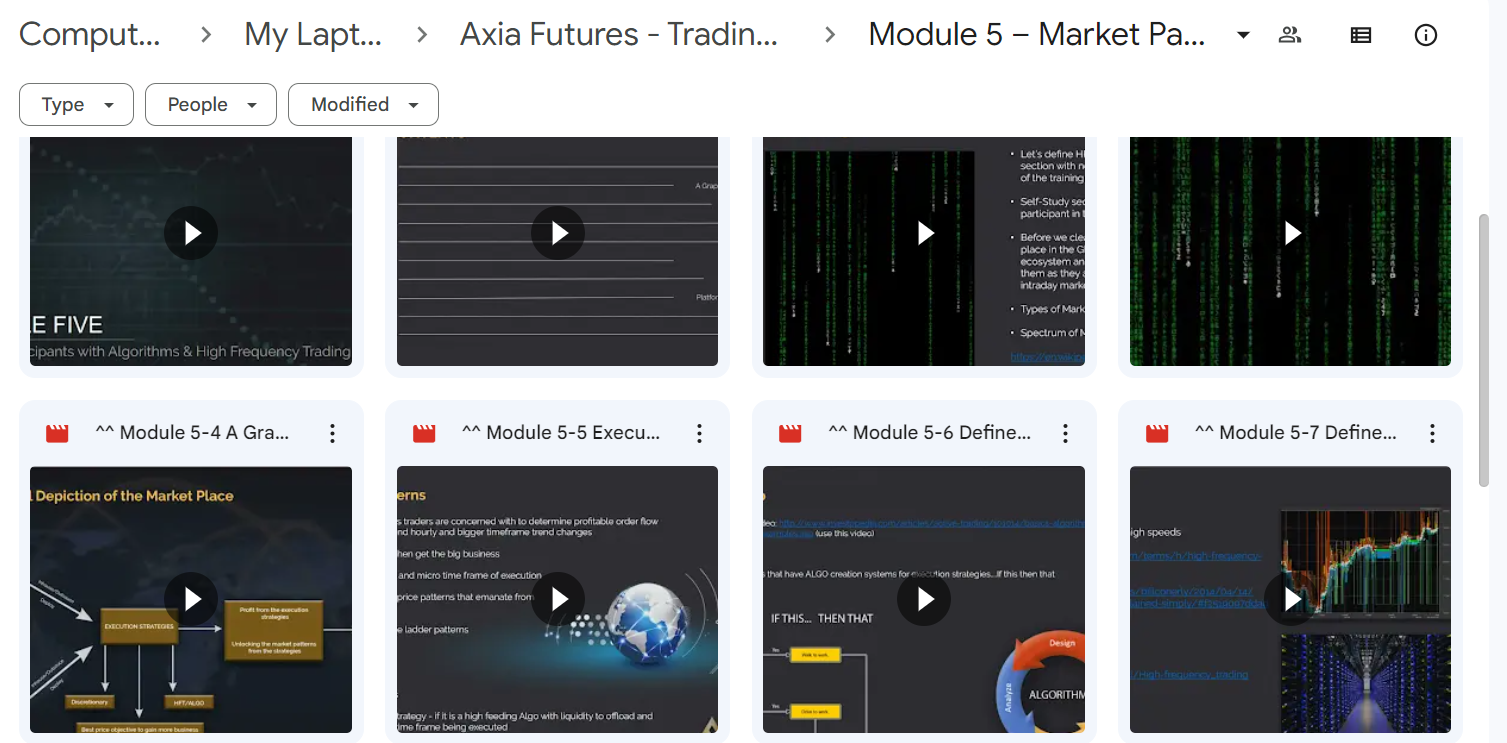Axia Futures – Trading with Price Ladder and Order Flow Strategies
$799.00 Original price was: $799.00.$20.00Current price is: $20.00.
Trading with Price Ladder and Order Flow Strategies [Instant Download]

Master professional order flow trading techniques used by elite institutional traders. This comprehensive 35.5-hour course teaches you to read market depth, identify large orders, and profit from real-time price action using advanced order flow analysis.
Instant Download Available | 17 Complete Modules | Live Trading Examples
What is Trading with Price Ladder and Order Flow Strategies?
Axiafutures Trading with Price Ladder and Order Flow Strategies course teaches how to analyze real-time market data using the Price Ladder, which displays buy and sell orders at different price levels.
It covers Order Flow analysis, examining trade volume and direction.
These tools help traders understand market sentiment and make informed decisions by providing a detailed view of market dynamics.
The course focuses on applying these strategies in modern, fast-paced trading environments.
What Makes This Order Flow Course Different from Others?
Unlike basic chart analysis courses, AxiaFutures’s Trading with Price Ladder and Order Flow Strategies reveals the hidden mechanics behind market movements. You’ll learn to read the price ladder like a professional trader, spotting institutional money flows before they appear on regular charts.
Key Differentiators:
- Developed by active prop traders from Axia’s London trading floor
- 12 exclusive live execution videos featuring million-dollar trader performance
- Real market replay sessions with detailed breakdowns
- Focus on modern algorithmic trading environments
- Advanced patterns like Delta Punch and Momentum Exhaustion Reversal
The course goes beyond theory. You’ll practice with actual market data, learning to identify absorption events, spoofing patterns, and trend reversals as they happen in real-time.
👉 Read more: Axia Futures – The Footprint Edge Course
📚PROOF OF COURSE


Trading with Price Ladder and Order Flow Strategies Curriculum
✅ Modules Details:
- Module 1: Learning Objectives, Outcomes & Methodology
- Module 2: Introduction to Order Flow
- Module 3: Course Curriculum Outline and Roadmap
- Module 4: What the Ladders tell you that the Charts don’t
- Module 5: Market Participants with Algorithms & High-Frequency Trading
- Module 6: Auctioning Exchange and Market Velocity
- Module 7: Introduction to Order Flow Price Patterns
- Module 8: Large Orders
- Module 9: Absorption Order Flow Events
- Module 10: Market Flipping, Layering, and Spoofing Price Patterns
- Module 11: Trend Reversal Order Flow Indicator
- Module 12: Momentum Breakout Order Flow Patterns
- Module 13: Practice: Confluence of Order Flow Strategies
- Module 14: Evolution of Order Flow and Price Patterns
- Module 15: What makes an Elite Order Flow Trader
- Module 16: Interviews with Elite Order Flow Traders
- Module 17: Replay Skill Development Drills and Test for Modules 8-12
- Bonus: Advanced Replay Drills and Practice
How Does Price Ladder Trading Actually Work?
Price ladder trading shows you exactly where big money is positioned in the market. Instead of guessing from price charts, you see actual buy and sell orders stacked at different price levels.
Core Concepts You’ll Master:
- Market Depth Analysis: Learn to read the order book like institutional traders, identifying where large positions are building or dissolving.
- Order Flow Patterns: Recognize 10 unique strategies including Volume Stop Hit and Run, Market Flipping, and Layering techniques used by professional trading desks.
- Real-Time Execution: Practice reading live market data through replay sessions, building the split-second decision-making skills needed for order flow trading.
- Algorithm Detection: Understand how high-frequency trading affects order flow and learn to trade alongside or against algorithmic systems.
The methodology focuses on practical application. Each module includes drill exercises using real market scenarios, so you develop muscle memory for pattern recognition.
Who should take Axia Futures Price Ladder & Order Flow Course?
This course works best for traders ready to move beyond basic technical analysis. You need dedication and practice time to master these professional techniques.
Perfect For:
- Experienced day traders looking to add institutional-level skills
- Futures traders wanting to improve entry and exit timing
- Active traders with capital to practice these intensive strategies
- Serious students committed to spending 6+ weeks mastering the material
Not Recommended For:
- Complete beginners without basic trading knowledge
- Part-time traders who can’t dedicate focused study time
- Traders seeking simple, low-maintenance strategies
- Those expecting guaranteed profits without significant practice
The course requires high-speed internet, compatible trading platforms, and preferably multiple monitors. International students should consider UK market hour timing for optimal learning.
Who teaches it?

Alex Haywood is an expert in Order Flow trading and the instructor of “Trading with Price Ladder and Order Flow Strategies” on Axiafutures. He focuses on practical application in his teaching.
Alex is part of the AXIA Trading Team, known for consistent performance in futures markets. While specific credentials aren’t mentioned, his role as instructor indicates his expertise.
The Axiafutures Youtube channel has over 45.2K subscribers and 660 videos, showing the platform’s reach and Alex’s influence in trading education.
2 reviews for Axia Futures – Trading with Price Ladder and Order Flow Strategies
Add a review Cancel reply
Related products
Futures Trading
Futures Trading
Best 100 Collection
Trading Courses
Trading Courses
Futures Trading
Trading Courses
Forex Trading





![[Bundle] Best 4 FutexLive Courses](https://coursehuge.com/wp-content/uploads/2024/08/Bundle-Best-4-FutexLive-Courses-300x300.jpg)





Anonymous (verified owner) –
Very good service at reasonable price!
Anonymous (verified owner) –
its the same as i expected with a bargain price